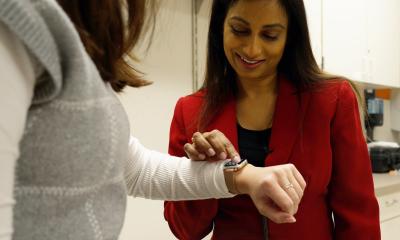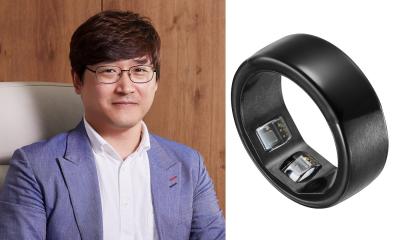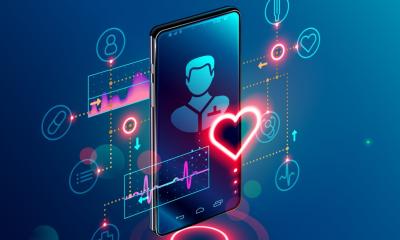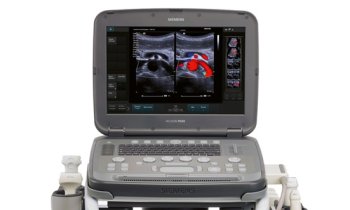
Source: PREVENTICUS GmbH, Jena
News • mhealth
Faster detection of atrial fibrillation thanks to smartwatch
Atrial fibrillation can be correctly detected using commercially available smartwatches. This is the conclusion of a study by researchers of the German Centre for Cardiovascular Research (DZHK) at the University Medicine Greifswald and researchers from the Basel University Hospital.
In the future, electronic watches could be used to comfortably and regularly monitor the heart rhythm of patients with an increased risk. This tool has the potential to detect atrial fibrillation earlier and thus reduce the risk for a stroke significantly.
Atrial fibrillation is the most common cardiac arrhythmia. Experts expect that it will occur even twice as often in the over 55's in the next 40 years. If the heart gets our of rhythm, the risk of stroke increases. However, the use of anti-coagulants can reduce this risk by up to 70 percent. The problem with this is, that atrial fibrillation frequently goes undetected and thus untreated, because it often occurs intermittently and doesn't cause any symptoms.
It is known that atrial fibrillation can be more frequently detected in a timely manner through increased and extended screenings of the cardiac rhythm. Professor Marcus Dörr from the University Medicne Greifswald and his Swiss colleagues from the Basel University Hospital were able to show that smartwatches offer a good option to comfortably and relatively easily monitor the heart rhythm. In a prospective controlled study, they examined 508 people with and without atrial fibrillation to see whether a smartwatch with an app to record the heart rhythm can accurately detect atrial fibrillation. For this purpose, the recordings from the smartwatches were analysed using an automated algorithm with regard to the presence of atrial fibrillation. The results were compared to a mobile electrocardiogram (ECG) device, in which two fingers from the right and left hands are laid on an electrode for measurement. These ECGs were subsequently evaluated by cardiologists who had no further information about the participants. The trial showed that the smartwatch could detect atrial fibrillation at least as well and as accurately as the mobile ECG. “It was particularly important that not too many false positive results were found by the app. “So atrial fibrillation was displayed, if in fact there was none", says Dörr. “Because this would result in unnecessary examinations and costs.”
Signal interference through movement
However, there were problems with the quality of the signal. Usually these disruptions occurred when the wearer were moving. Then the smartwatch could not always correctly capture the heart rhythm. In the study, the researchers were not able to analyse 20 percent of the data due to poor signal quality. “A possible solution could be having multiple automated recordings of the heart rhythm at night, when wearers move less frequently, in addition to the improvement of the algorithm", says DZHK investigator Dörr. The study also showed that a repeated one-minute recording suffices to reliably detect cardiac arrhythmias. Also, an extended recording interval of three or five minutes did not produce better results.
However, before the smartwatch can actually be used for screening of high-risk patients, further clinical trials are required. An EU-financed study is already underway, to investigate whether a smartwatch can reliably detect asymptomatic atrial fibrillation in higher risk patients.
Currently, patients with an increased risk of atrial fibrillation undergo a long-term ECG, which records the heart rhythm for up to 72 hours. If no abnormalities are detected during this period, one can theoretically stop monitoring the heart rhythm, according to the medical guidelines. If the risk is very high, small implantable event recorders behind the sternum can be surgically implanted in selected cases. An expensive and invasive method. Other external devices for rhythm monitoring are expensive and often not reimbursed by health insurance. A smartwatch is comparably inexpensive and can be purchased by everyone, in theory. It may therefore close the gap between the long-term ECG and an implanted devices in the future.
Quelle: Greifswald Universiy
18.03.2019











